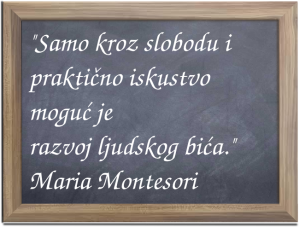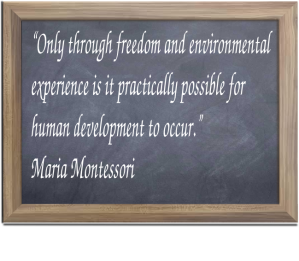Čulo vida, kao i sva ostala čula, novorođenče razvija postepeno. Razvoj ovog čula u tesnoj je vezi sa razvojem mozga i smetnje u razvoju čula vida može dovesti do zaostajanja u mentalnom razvoju. To naravno nije uvek slučaj, treba imati na umu da se svako dete razvija na svoj način.
Novorođenče u početku svet istražuje samo vizuelno, pa je izgled okruženja ključan za rani rast i razvoj. Želela bih da svom detetu od samog početka pružim mogućnost da posmatra umetničke slike različitih autora i epoha, kao i da ako je ikako moguće iz bebinog svakodnevnog okruženja izbacim likove iz crtanih filmova i bajki.
Zbog svega ovoga me je jako zanimalo šta zapravo bebe vide u različitim uzrastima. Napravila sam malo istraživanje na tu temu i evo šta sam saznala…
Bebe odmah po rođenju imaju zamagljen vid i vide samo 20-tak cm ispred sebe, što je otprilike razdaljina od lica bebe do lica roditelja kada je beba u naručju. Takođe u ovom periodu bebe primećuju samo jake kontraste u bojama i prijaju im slike poput crno-belih geomterijskih mozaika. Idealno bi bilo da su slike postavljene tako da ih beba može često posmatrati, recimo poput nalepnica na zidu. Trebalo bi da ima najviše jedna do dve slike istovremeno i da se menjaju nakon nekoliko nedelja. Do četvrtog meseca života bebe uče kako da fokusiraju objekte pogledom, razvijaju kordinaciju ruku i pogleda i počinju da prate kretanje objekata.
Od četvrtog ili petog meseca života do osmog bebe počinju da primećuju male objekte, kao i da formiraju trodimenzionalni doživljaj prostora. Ovo se posebno odnosi na daljinu između objekata. U ovom periodu već mogu razlikovati boje, kao i pojedine nijanse sličnih boja (npr. crvenu i narandžastu). Ovo je trenutak kada detetu možemo da predstavimo i detaljnije slike sa više boja i nijansi. Ipak sa time ne treba preterivati. Najbolje je da se postepeno uvode kompleksnije kombinacije boja i oblika.
Razvoj čula vida kod dece traje sve dok traje tzv. “upijajuća faza”, tj. do šeste godine detetovog života. Ovaj razvoj može se stimulisati različitim materijalima kojima je fokus na obliku/boji i razlikama u njima.
—————————————————————-
The vision, as well as all the other senses, newborn develops gradually. The development of this sense is closely related with brain development and delay in the development of eyesight can lead to delays in mental development. This, of course, is not always the case, since every child has a unique way of development.
Newborn at the beginning explores the world only through his/her eyes and therefore environment is crucial for early growth and development. It is important for me that this environment is free of cartoon and fairy characters. Instead it would be nice to have works of art of different authors and periods, adapted to child’s needs and visual capabilities.
Because of all this I was very interested in what actually the baby can see at different ages. I did a little research on the subject and here’s what I learned.
Babies immediately after birth have blurred vision and can see only about 20 cm in front of them, which is the distance from the baby’s face to parents face when the baby is in the parent arms. Also in this period babies perceive only the strong contrasts in colours paintings such as black-and-white geometric mosaic are the most adequate. Ideally, they should be set so that the baby can often viewed them and not more of one or two at a time. Also they should be changed after a few weeks. From birth until the fourth month of life, babies learn how to focus their eye sight, they develop hand-eye coordination and begin to follow moving objects.
From the fourth or fifth month of life to eight month babies begin to notice small objects, as well as to form a three-dimensional sense of space. This is especially the case with distance between objects. In this period babies can distinguish between different colours and shades of similar colours (e.g., red and orange). This is the moment when we can introduce more detailed paintings with more colours and shades. Yet this should come gradually, introducing first simpler and then more complex combinations of colours and shapes.
The development of eyesight in children lasts as long as the so-called. “Absorbent phase” is lasting, usually to the age of six. This development can be stimulated by various materials that focus on shape / colour differences in them.


